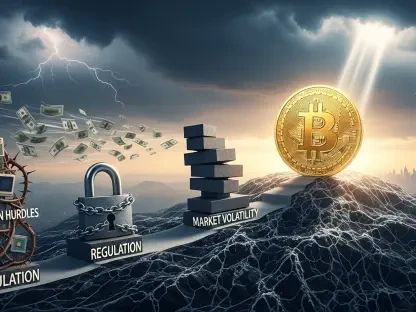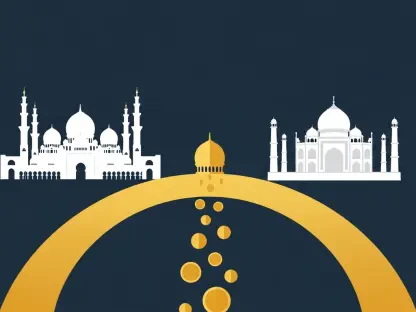In recent years, a significant transformation has been underway in how public services are accessed and paid for, shifting from traditional cash transactions to digital payment systems. This change has been notably accelerated by technological advances and social changes, including, but not limited to, the COVID-19 pandemic. As part of a broader trend toward a cashless society, public entities have begun mandating the use of credit cards, mobile wallets, and other digital methods for transactions related to public welfare. This transition brings several benefits, such as enhanced convenience, speed, and security. However, questions arise surrounding accessibility and inclusivity, particularly for socioeconomically disadvantaged groups, senior citizens, and individuals without access to modern banking facilities. While digital payments streamline operations and reduce costs for service providers, they risk excluding some of the very citizens they intend to serve, raising an essential debate on whether the progress of technology entails unintentional exclusion or genuine modernization.
Impact on Transportation and Infrastructure
Public transportation systems across major American cities have quickly shifted from accepting cash to digital payment methods. This transition enables quicker boarding processes and reduces the operational costs associated with managing cash. In cities such as New York, Los Angeles, and Washington, D.C., cash payments have been almost entirely phased out, with commuters now required to use smart cards or mobile apps for fare payment. While this approach undoubtedly streamlines transport operations and decreases administrative burdens, it imposes hurdles for specific demographics. Tourists unfamiliar with local digital systems, low-income passengers without credit access, and older adults who may not be comfortable with technology are left struggling. The accessibility of public transportation, a core element of daily urban life, becomes a barrier instead of a facilitator, questioning the alignment of such advances with inclusivity objectives.
Similarly, toll roads and bridges have embraced the transition to digital payment, with systems like E-ZPass and license plate recognition now commonplace. The benefits range from improved traffic management to reduced labor costs by eliminating older toll booths reliant on cash transactions. However, individuals lacking an electronic pass or who prefer cash payments find themselves at a disadvantage. In several states, the removal of cash lanes forces drivers towards mandatory digital compliance or subjects them to costly administrative penalties. This transition brings efficiency but at a social cost, requiring reconsideration on integrating technology responsibly without leaving behind cash-reliant individuals.
Effects on Public Amenities and Daily Transactions
In addition to transportation, other public amenities like parking and utility payments have seen a similar shift. Cities have discontinued or reduced the number of coin-operated parking meters, replacing them with app-based payment systems. Such changes enhance operational efficiency and are deemed more convenient for the tech-savvy population. However, they present challenges for those without access to smartphones or who prefer cash payments. In some areas, the inability to pay through digital means has resulted in fines, disproportionately affecting those less equipped technologically. Moreover, utility companies increasingly encourage digital bill payments, often eliminating over-the-counter transactions entirely. This digital-first approach may place an undue burden on socially vulnerable groups, such as people without bank accounts and senior citizens unversed in digital payment platforms, leading to higher reliance on third-party payment systems with additional charges.
Departments of Motor Vehicles (DMV) have also notably adopted cashless operations, now accepting only electronic payments for services like license renewals and fines. This approach reduces administrative complexity but poses difficulties for those dependent on cash. Older drivers or those unbanked may experience increased hardship, inadvertently placing financial and procedural obstacles in their path. With each agency prioritizing digital forms of payment, the question arises about maintaining a balance between modern efficiency and essential access to public services for all citizens. The unintended consequences dictated by this rapid shift must form an integral part of the public dialogue to avoid exacerbating social divides.
Challenges for Schools and Recreational Facilities
School systems, too, have significantly shifted towards cashless operations, introducing mobile applications and online interfaces for transactions such as lunch payments. Parents are now often required to preload students’ meal accounts digitally, limiting schools’ dealings with cash directly. However, families maintaining cash-based budgeting may find this transition challenging, raising potential barriers for children whose digital meal accounts are underfunded. Schools banning cash purchases for operational efficiency inadvertently risk excluding some students from meal access, highlighting the potential pitfalls of complete digitization without equitable provisions.
This trend extends to public recreation and leisure facilities, including swimming pools, community centers, and municipal gyms that typically cater to diverse populations. In many cases, ribbon-cutting ceremonies now reveal state-of-the-art facilities where entry fees or participation registration must be completed online. Families lacking credit or debit cards find spontaneity and accessibility eliminated, with a simple visit requiring digital foresight and planning. Community engagement, a core aspect of such public spaces, becomes artificially constrained by technology’s demands, necessitating awareness and consideration for those lacking requisite resources.
Social Implications and Future Considerations
In moving toward a cashless society, one aspect that holds significant weight is the requirement to pay municipal fines and parking violations digitally. While this practice simplifies revenue collections, it presents challenges for individuals relying on traditional payment methods. Some jurisdictions have entirely eliminated cash options for these transactions, with non-compliance resulting in penalties, creating unnecessary complications, especially for those with budgetary constraints.
Entry into national and state parks has also met the cashless trend, requiring digital payments for entrance fees or reservations. Nature lovers should ideally foster inclusivity, yet impulsive visits become increasingly demanding on those without digital accounts, raising barriers to enjoyment. This digital pivot’s broader implications extend beyond convenience. Financial inclusion remains a key topic of concern, with approximately 4.5% of U.S. households unbanked. Consequently, digital-only services create added barriers for individuals already on society’s margins, prompting discourse on technology’s human impact. Privacy issues regarding trackable digital transactions further blur ethical lines between progressive enhancements and citizens’ rights, contrasting cash transactions’ historical anonymity.
The potential implications of a fully cashless society prompt reflection on balancing technological advancements with equitable access. If planned carefully, modernization integrates technology without disenfranchising traditional users, providing a more inclusive society. Conversely, technological oversight risks rendering vital public services inaccessible for already marginalized and vulnerable groups, emphasizing the paramount need for thoughtful execution.
Balancing Progress with Accessibility
Over recent years, there’s been a shift in how public services are both accessed and paid for, transitioning from cash transactions to digital payment systems. This transformation has been driven by technological advancements and societal changes, notably sped up by the COVID-19 pandemic. As part of the move toward a cashless society, public entities increasingly mandate the use of credit cards, mobile wallets, and other digital methods for transactions tied to public welfare programs. This transition offers benefits like greater convenience, speed, and security. However, it raises accessibility and inclusivity concerns, needing attention to socioeconomically disadvantaged groups, seniors, and people lacking access to current banking facilities. While digital payments can simplify operations and minimize costs for service providers, they risk alienating those who are meant to benefit, leading to an important discussion about whether technological advancement inadvertently excludes or genuinely modernizes society.









